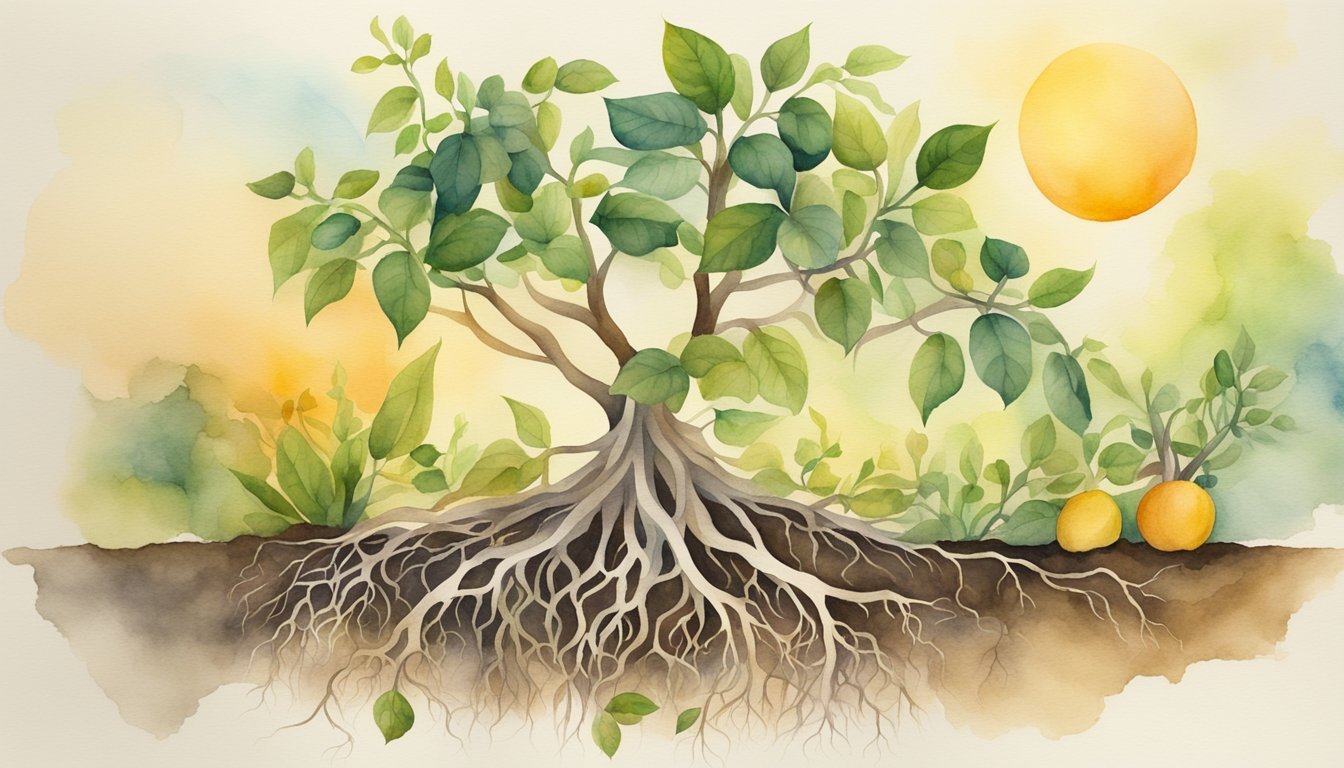Understanding Plant Biology

In this exploration of plant biology, readers will learn about the crucial processes that enable plants to thrive, from harnessing energy through photosynthesis to their diversity and structural complexities.
Photosynthesis and Energy
Photosynthesis is the remarkable biochemical process by which plants convert light energy into chemical energy. Using chlorophyll and other pigments, leaves capture sunlight, initiating a series of reactions that transform carbon dioxide and water into glucose, a form of food, and release oxygen as a byproduct. Central to this process is the photosystem I, which plays a critical role in converting light into the energy required for growth.
Plant Growth and Development
Plant growth and development is a complex orchestration of cellular activities, guided by genetic information and influenced by environmental factors. Hormones regulate the timing of growth phases, which include germination, vegetative growth, flowering, and fruiting. Minerals from the soil are absorbed by the roots and used to build tissues that support the plant structure and function.
Diversity of Plant Species
The plant kingdom exhibits incredible diversity, comprising over 390,000 plant species, each with unique adaptations that enable survival in varied environments. From the towering sequoias to microscopic algae, plants have evolved an astonishing array of forms and functions. A plant’s attributes, such as leaf size and shape, stem structure, or presence of bioactive compounds, reflect its evolutionary heritage and ecological niche.
Plant Structure and Function
Understanding plant structure is central to comprehending how they function. Plants have different organs – roots, stems, and leaves – each with specialized roles. The roots anchor the plant and absorb water and nutrients, while stems provide support and house vascular tissues that distribute resources. Leaves are primary sites for photosynthesis and gas exchange. Each component works together, allowing the plant to grow, reproduce, and respond to its environment.
Plant Ecology and Environmental Impact
Plant ecology plays a critical role in understanding the environmental impact on Earth’s various ecosystems. This section explores the dynamic relationships between plants and their environment, from adaptation to human-induced changes.
Plant Adaptations and Evolution
Plants have experienced a long history of evolution, adapting to diverse environments on Earth. From the astonishing drought resistance in desert species to the development of antifreeze proteins that allow some flora to survive in the Arctic, these adaptations are pivotal for survival. Advanced genomic tools have helped scientists construct the reference genome of many plants, revealing insights into evolution and aiding in the crafting of more resilient crops.
Plants and Climate Change
Climate change is precipitating alterations in the way plants interact with the environment, often resulting in shifts in species distribution. Rising temperatures and changing precipitation patterns are leading to habitat loss and increased exposure to diseases. The scientific community is actively researching ways to bolster plant resilience against these changes, such as enhancing their physiological processes, including peptides and signalling cascades.
Importance of Plants in Ecosystems
As primary producers, plants are foundational to most ecosystems, converting solar energy into forms that can be used by other species. This important role supports a variety of other organisms, from pollinators to animals that rely on plants for shelter and food. The health and diversity of plant life are essential for ecosystem sustainability and maintaining the balance of our atmosphere.
Plant Breeding and Agricultural Science
Agricultural science has shown significant progress through plant breeding. With the aim to improve food security, crop scientists are developing new varieties of wheat, maize, rice, and sugarcane that can better withstand environmental stresses. Technological advancements in areas such as polyploid assembly and gene silencing are paving the way for more efficient and sustainable agriculture to meet the demands of a growing population.

